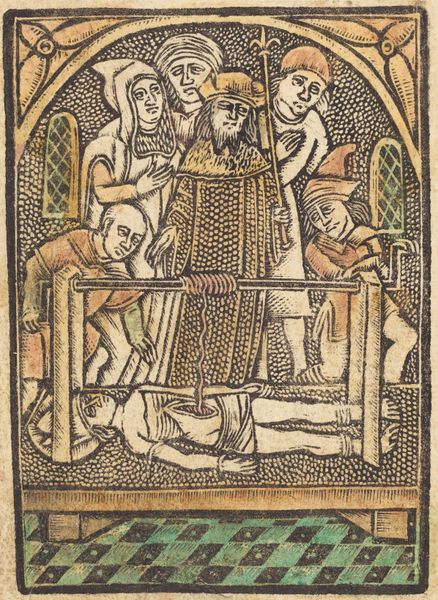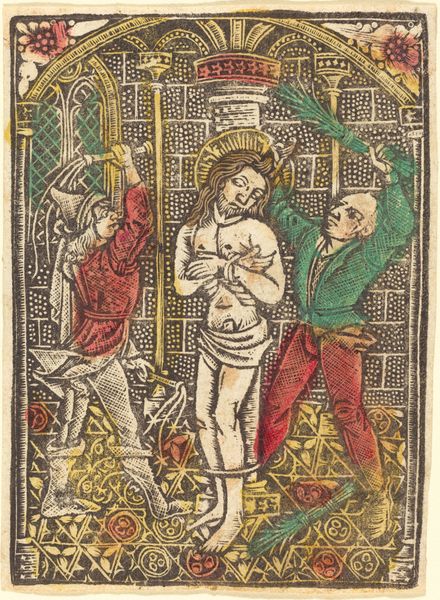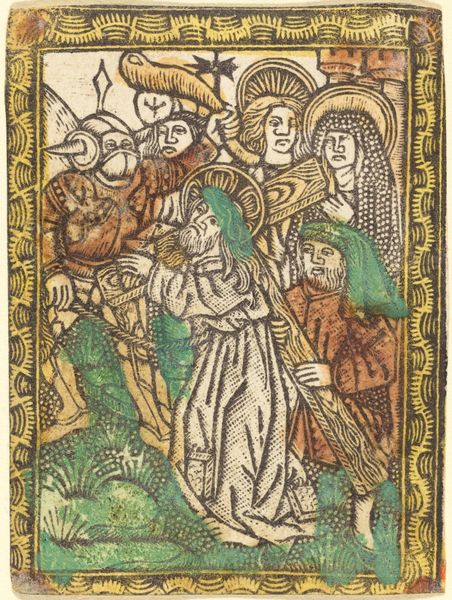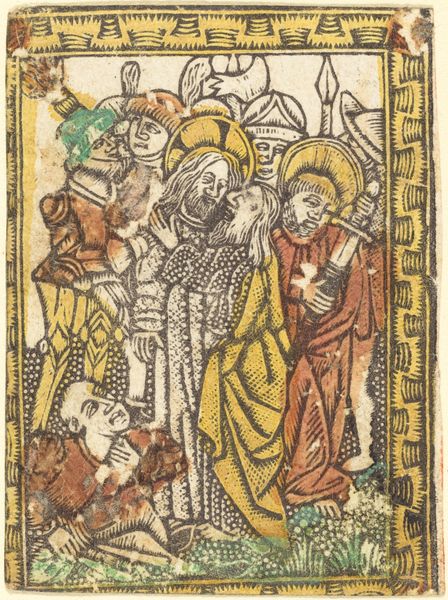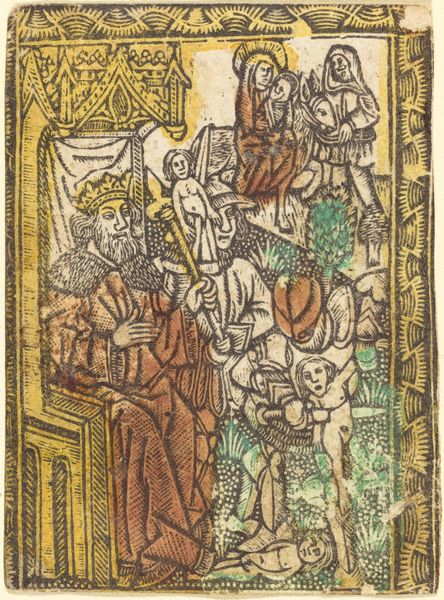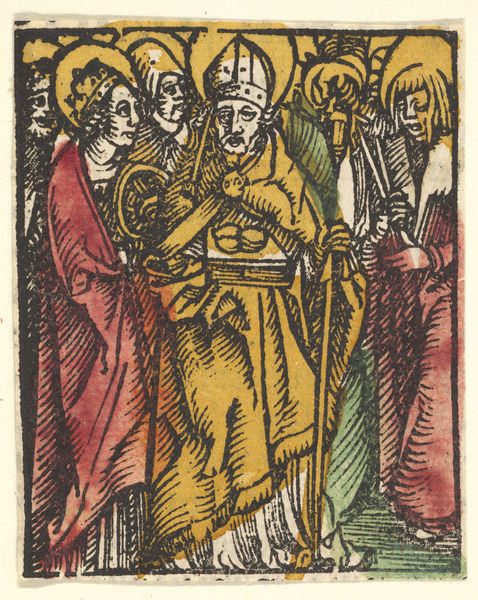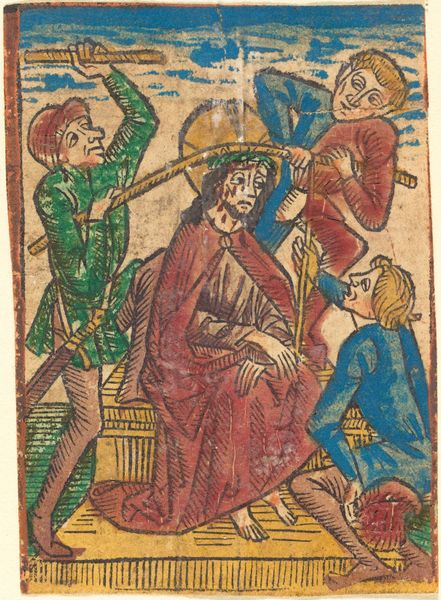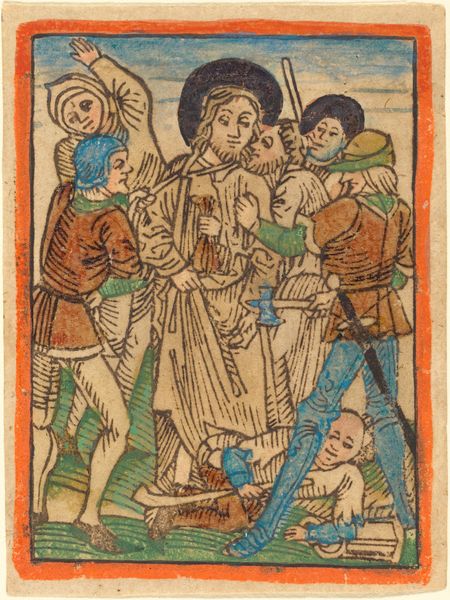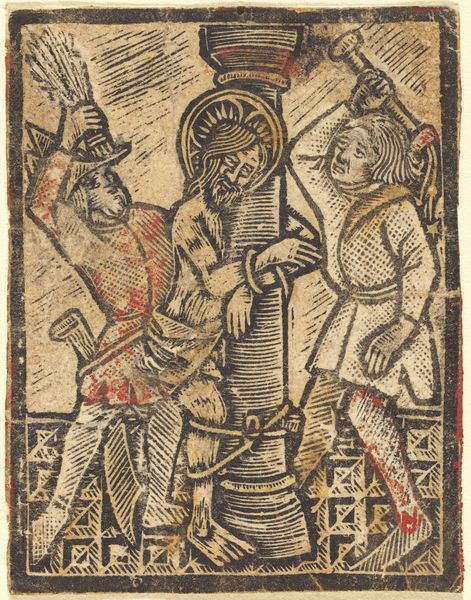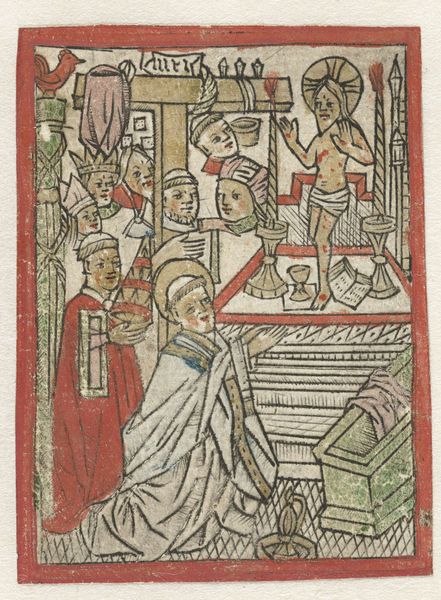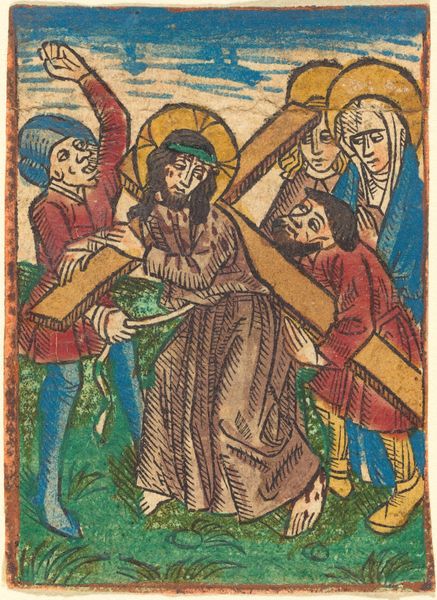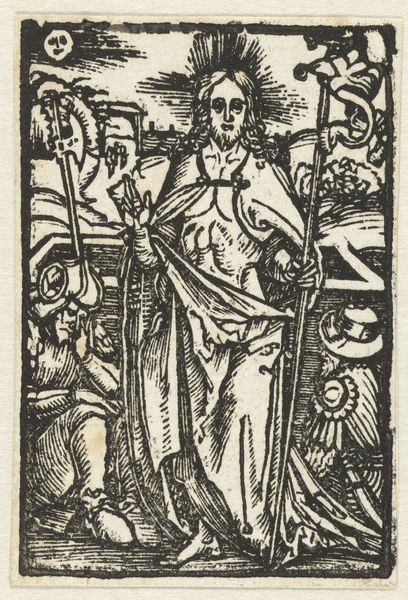
print, woodcut
#
medieval
#
narrative-art
# print
#
figuration
#
woodcut
#
line
#
northern-renaissance
Copyright: National Gallery of Art: CC0 1.0
Curator: This is an early woodcut dating back to about 1480, titled "The Entry into Jerusalem." The creator is unknown, although we situate the piece within the Northern Renaissance style. Editor: My first impression is its density. The figures, patterns, and the thick lines of the woodcut technique create a really striking texture, and a great visual weight that pulls the eye immediately to the composition's heart. Curator: Precisely. The linear quality and strong contours, characteristic of woodcut prints, define each element with considerable emphasis. Note the rendering of Christ's robes and the donkey's hair, all described through this dense network of carved lines. Editor: Beyond the technical, I’m struck by the setting. Look at the patterned gate to the city on the right. It feels more symbolic than like real space, heightening the anticipation around Jesus’ entry. It underscores the historical context within religious artwork of this time. Curator: It does contribute to the flattened pictorial space we often see in the period. But consider the very deliberate design. The artist utilized varying line weights to establish spatial depth, using, in some cases, thinner strokes to designate forms located further into the distance. It also establishes a powerful semiotic frame, the texture and shading adding depth to the overall construction. Editor: While it's certainly skillful, I read the overall presentation as reflecting something of the historical moment. This image circulated at a time of political and religious shifts. The message would have spoken to people seeking clarity amid upheaval. How might it be received? Curator: One assumes, with devotion and didactic engagement. As a medium, the relative affordability and reproducibility of prints aided in disseminating these visual narratives among broader segments of society. It makes the subject accessible beyond traditional art venues. Editor: Indeed. By studying its iconography, coupled with its original setting within a broader network of prints, this work truly becomes meaningful in terms of public reception, allowing access and inspiring conversation around what images of devotion may convey, then and today. Curator: The graphic qualities, line and density create a fascinating piece that connects visual dynamics with symbolic impact, revealing how its unique structural qualities underscore the gravity of its underlying religious narrative. Editor: And that intersection is perhaps where history really meets art: in understanding how an image can be at once aesthetically remarkable and a powerful instrument of cultural meaning.
Comments
No comments
Be the first to comment and join the conversation on the ultimate creative platform.
